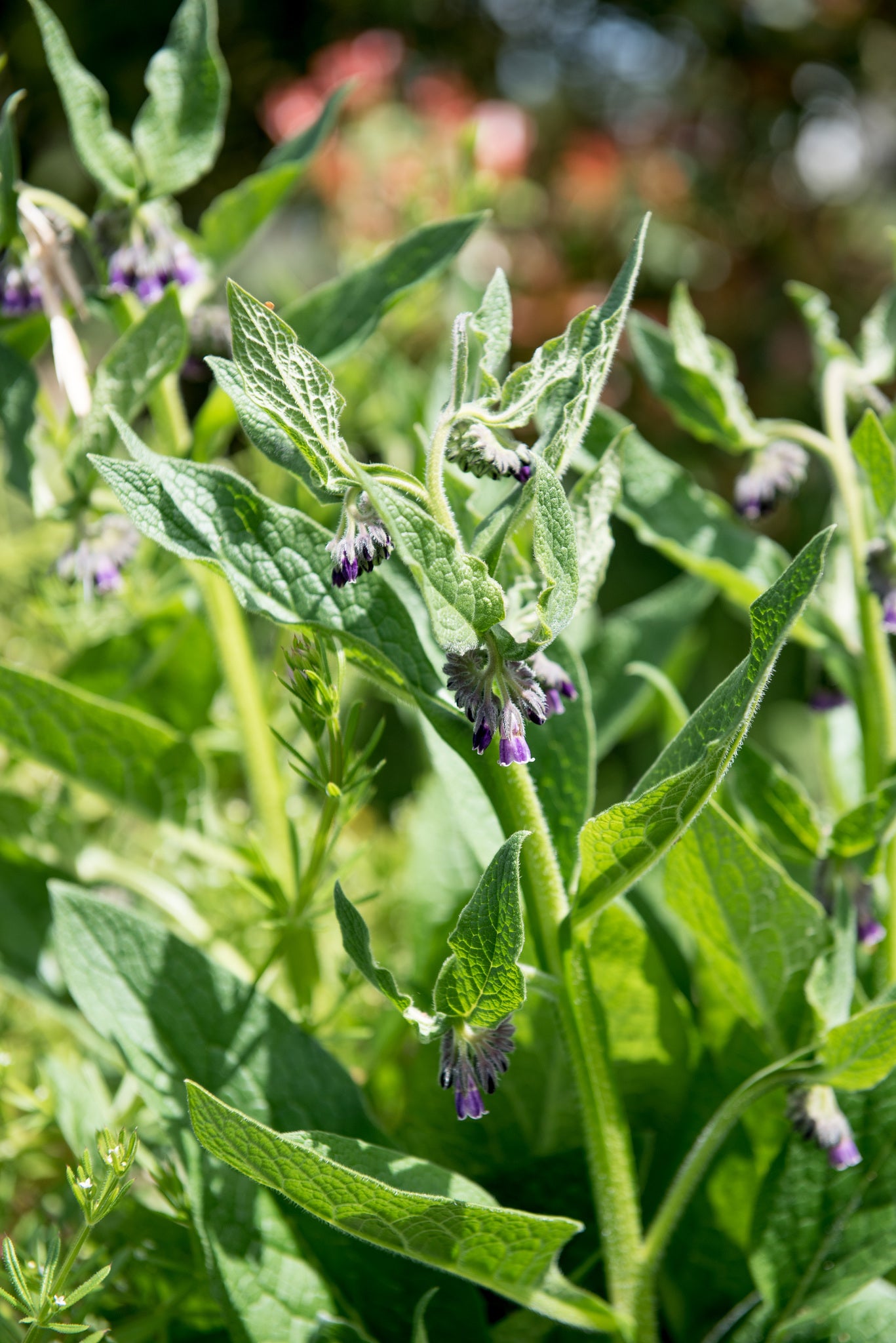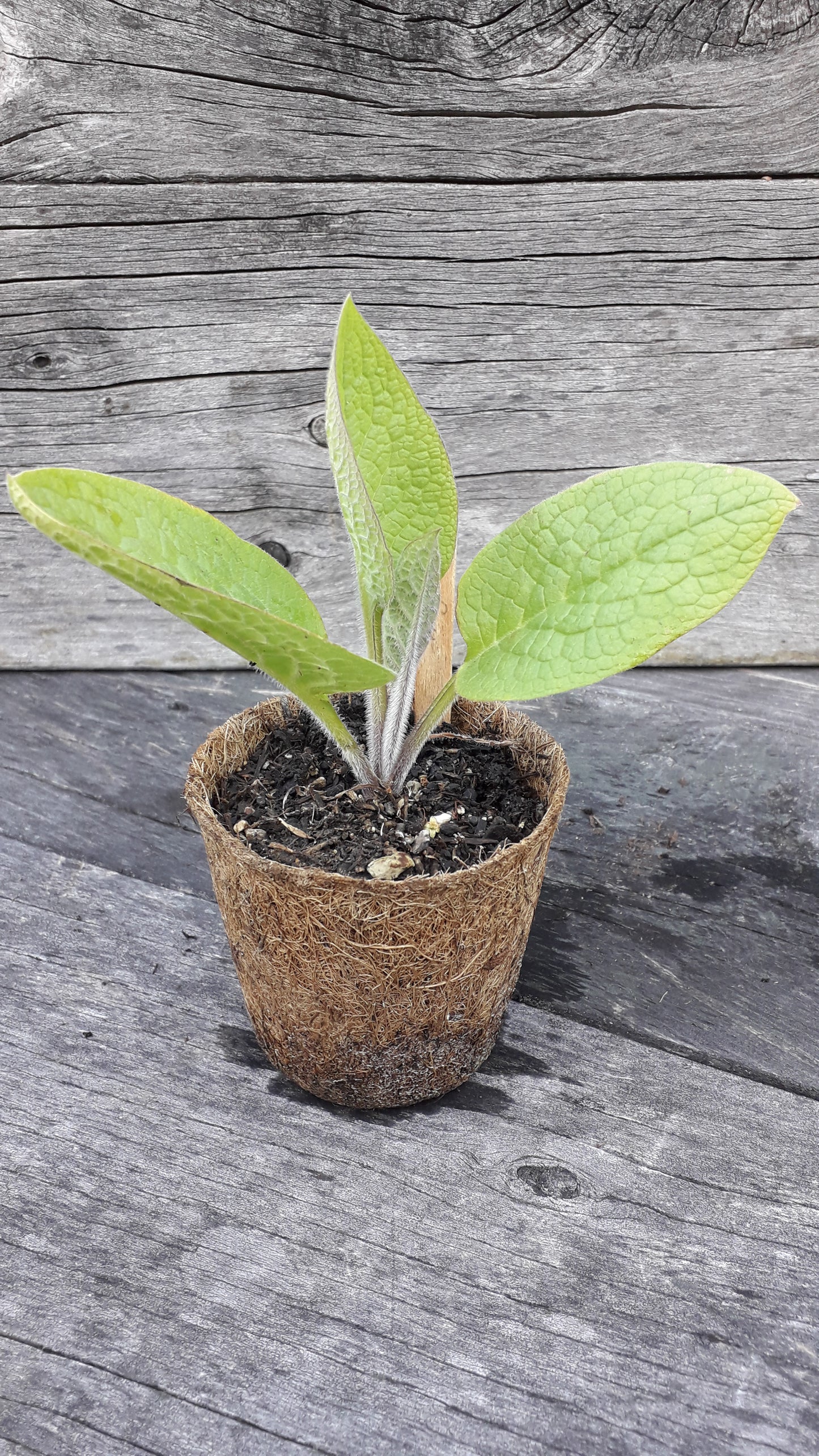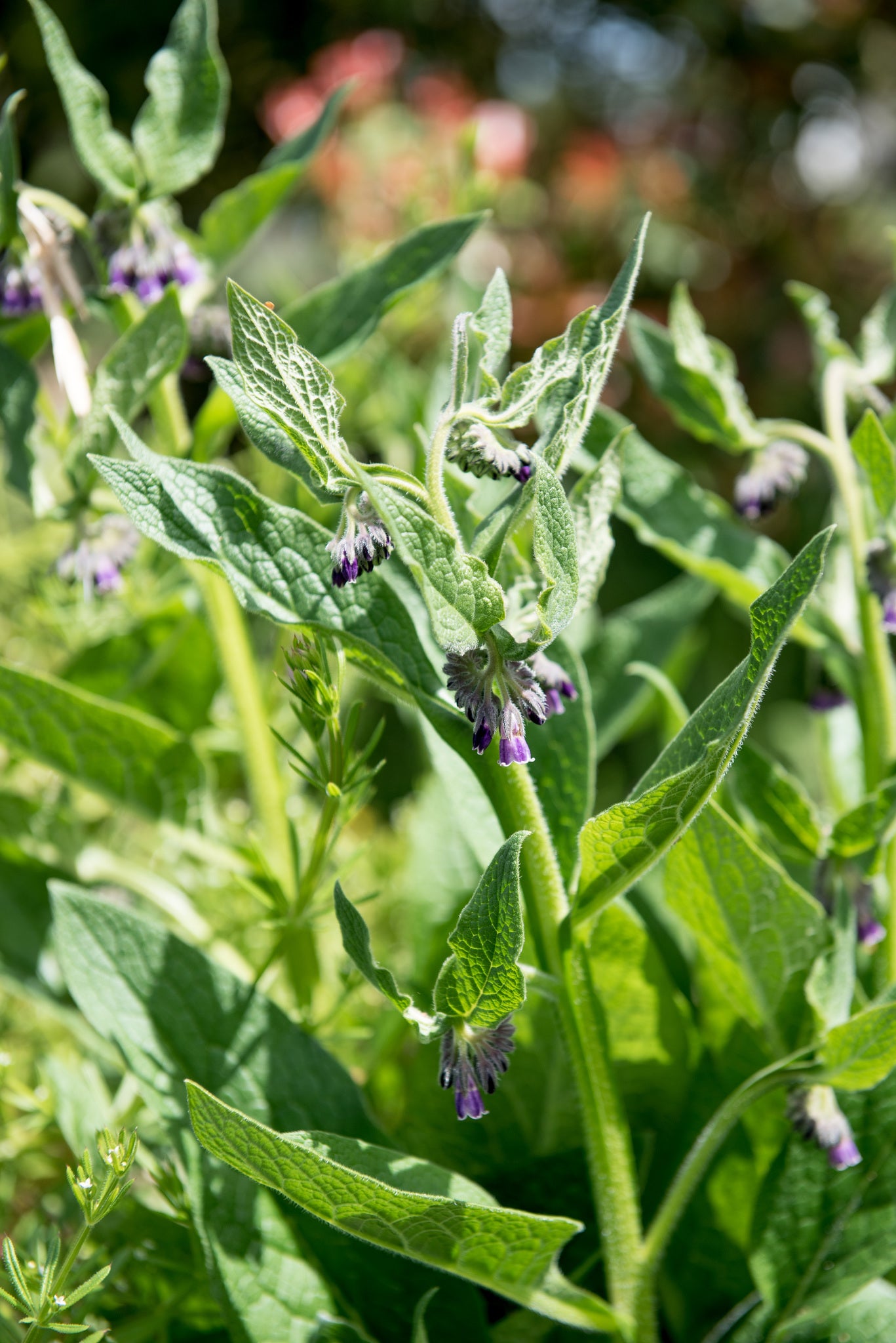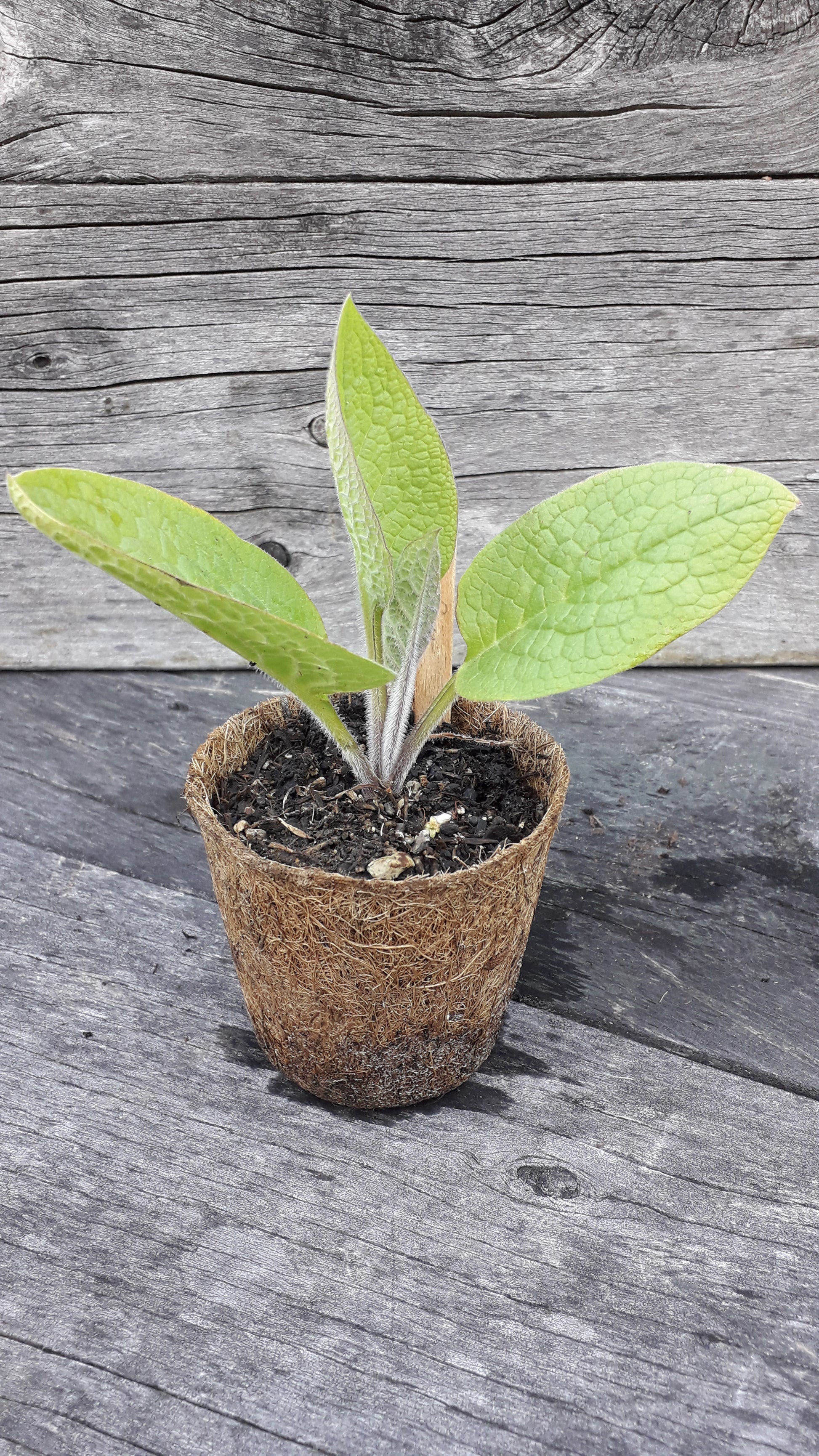The Herb Garden
Comfrey
Comfrey
Couldn't load pickup availability
Russian Comfrey
Botanical name: Symphytum x uplandicum
Life cycle: Herbaceous perennial
Height: 75-100 cm
Position: Full sun or part shade
Soil preference: Moist / well drained
Description
Comfrey is a fast growing herbaceous, deep rooted perennial growing to around 1 metre high under good conditions. It has large, hairy leaves which grow in a rosette form. The small bell-shaped, mauve, or pink flowers are borne in clusters. The roots are large with black / dark skin with fleshy insides, and travel deep into the soil. Russian comfrey is a naturally occurring hybrid which is sterile and does not reproduce by seed.
Uses
Comfrey is a well-known companion plant with the roots and leaves having many medicinal uses. One of comfrey’s key constituents is allantoin, a cell proliferant that helps repair damaged tissue. As such, comfrey root and leaves are a common ingredient in healing salves, poultices, oils, and ointments. Comfrey is particularly known for its healing properties for skin complaints such as eczema and for cuts, bruises, and sprains.
Comfrey also has anti-inflammatory properties. As such, dried comfrey leaves and roots are commonly used externally for any kind of inflammatory swelling and to reduce inflammation 'associated with sprains and broken bones. The mashed fresh roots can be used as a poultice to relieve the pain of gout, rheumatism, and arthritis. A poultice of freshly bruised leaves laid on a wound or burn will ally inflammation and cause the edges to come together and heal faster.
While comfrey roots and leaves have been taken internally for centuries, their use has now been linked with liver damage and as such consumption should be avoided.
Comfrey is what is known as a dynamic accumulator i.e., it is incredibly effective at mining nutrients from deep in the soil and bringing them to the surface. As well as trace minerals the foliage has good levels of nitrogen, phosphorus and in particular, good levels of potassium. It also contains silica, magnesium, calcium, and iron. These nutrients will be naturally cycled through the soil when the plant dies down each winter, however a well-watered and fertilised patch can be harvested 3-5 times a season.
The leaves can be used to make a liquid fertiliser, added to the compost heap, or wilted and used to line potato trenches. Comfrey can also be grown around fruit trees as a ground cover and slashed several times a season to mulch the tree. The fresh leaves also make great chook or stock fodder, although stock generally prefer the leaves slightly wilted.
The flowers are excellent bee attractors.
Growing conditions
Comfrey will grow in many conditions. It thrives in moist, well-drained soil with high fertility. It will grow in full sun and partial shade, providing it gets enough water during summer. It grows easily and vigorously during summer, however the plant will die down in winter depending on how cold it is in your garden.
Comfrey is a naturally occurring hybrid which is sterile and does not spread by seed. However, comfrey can become a problem as any small piece of root will grow. As such, make sure you plant it where you want it as it’s nearly impossible to remove the deep chunky taproot.
9cm pot.
Organically grown plant in a biodegradable coir pot.
Share




